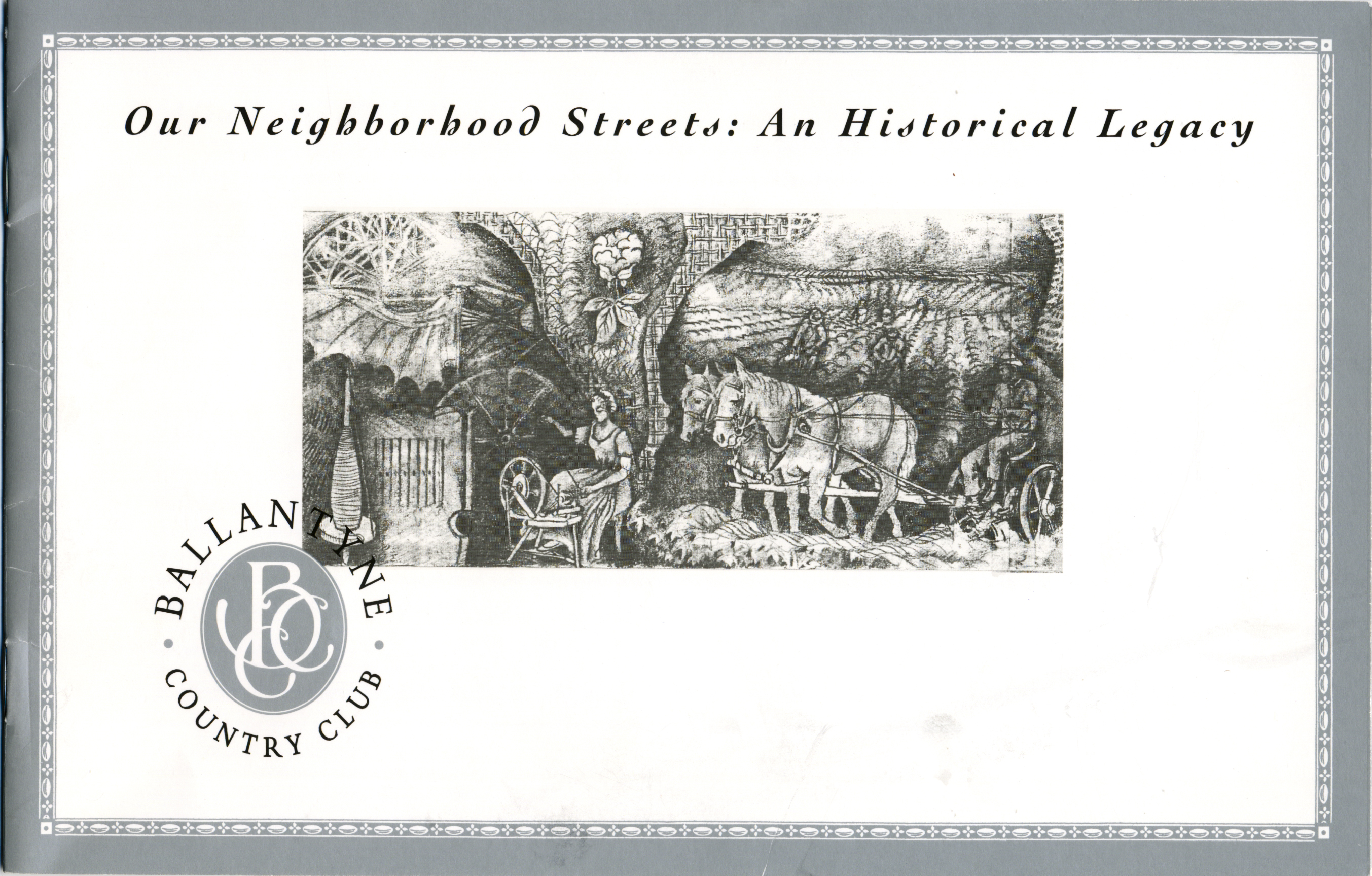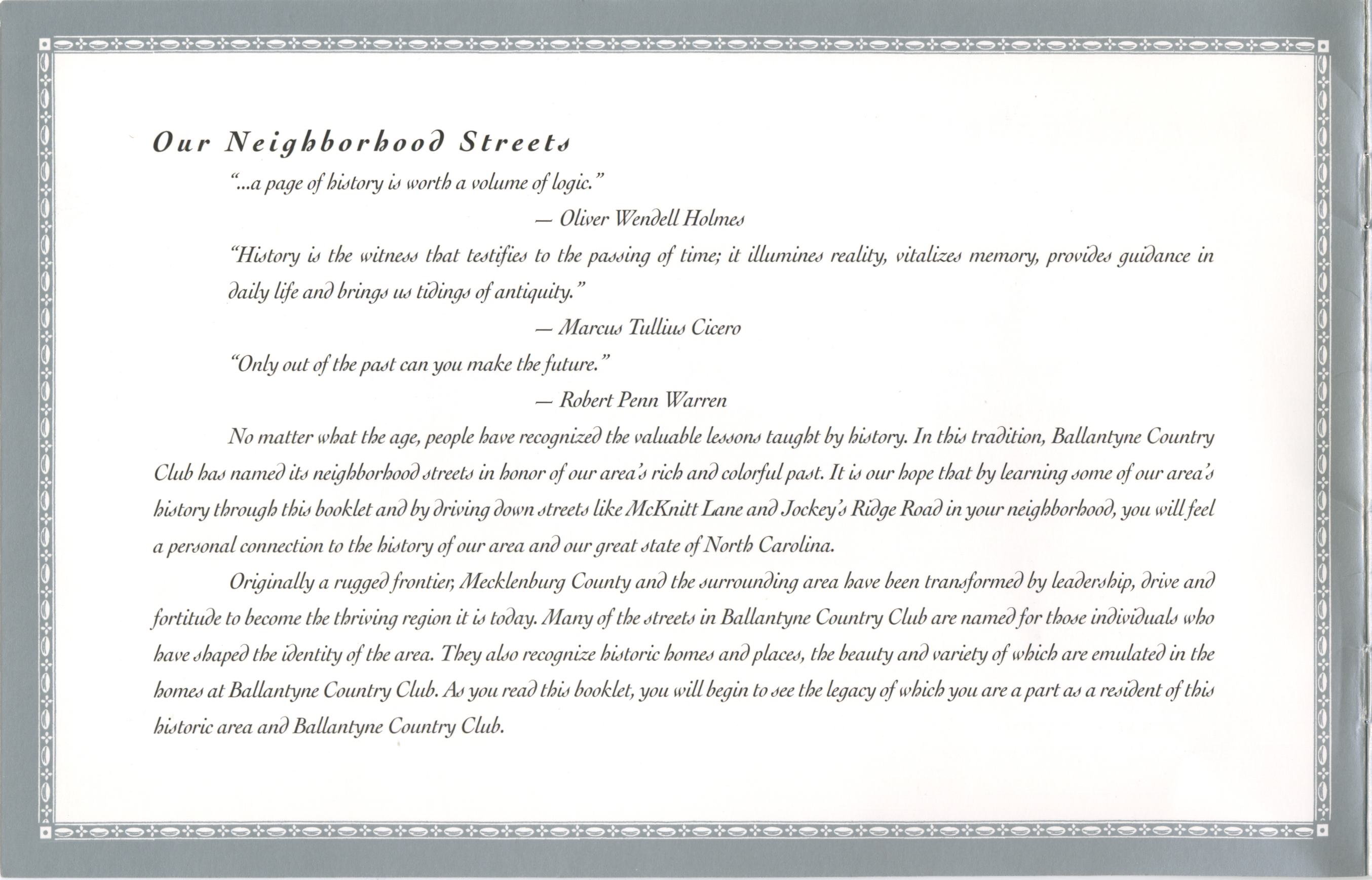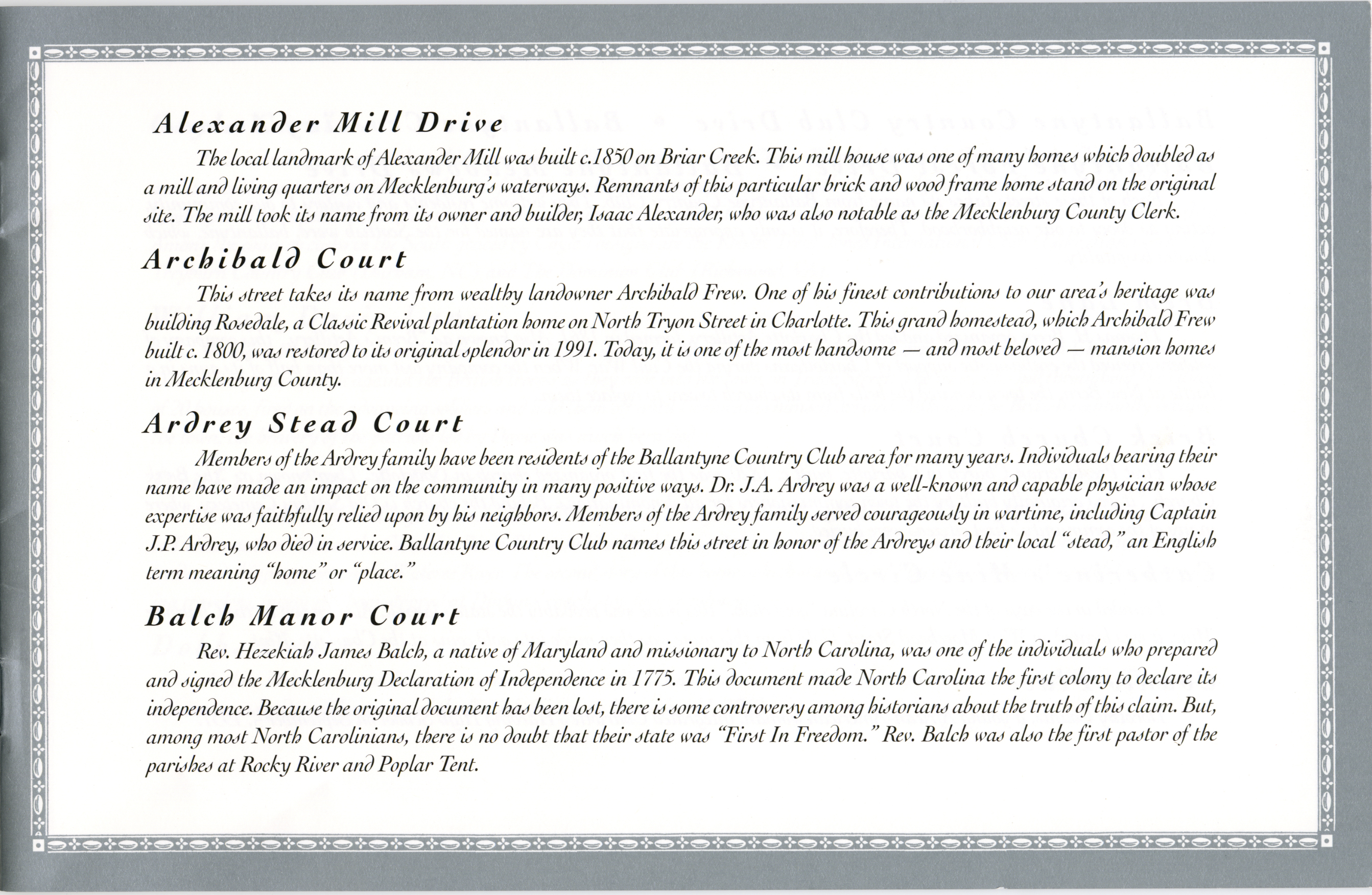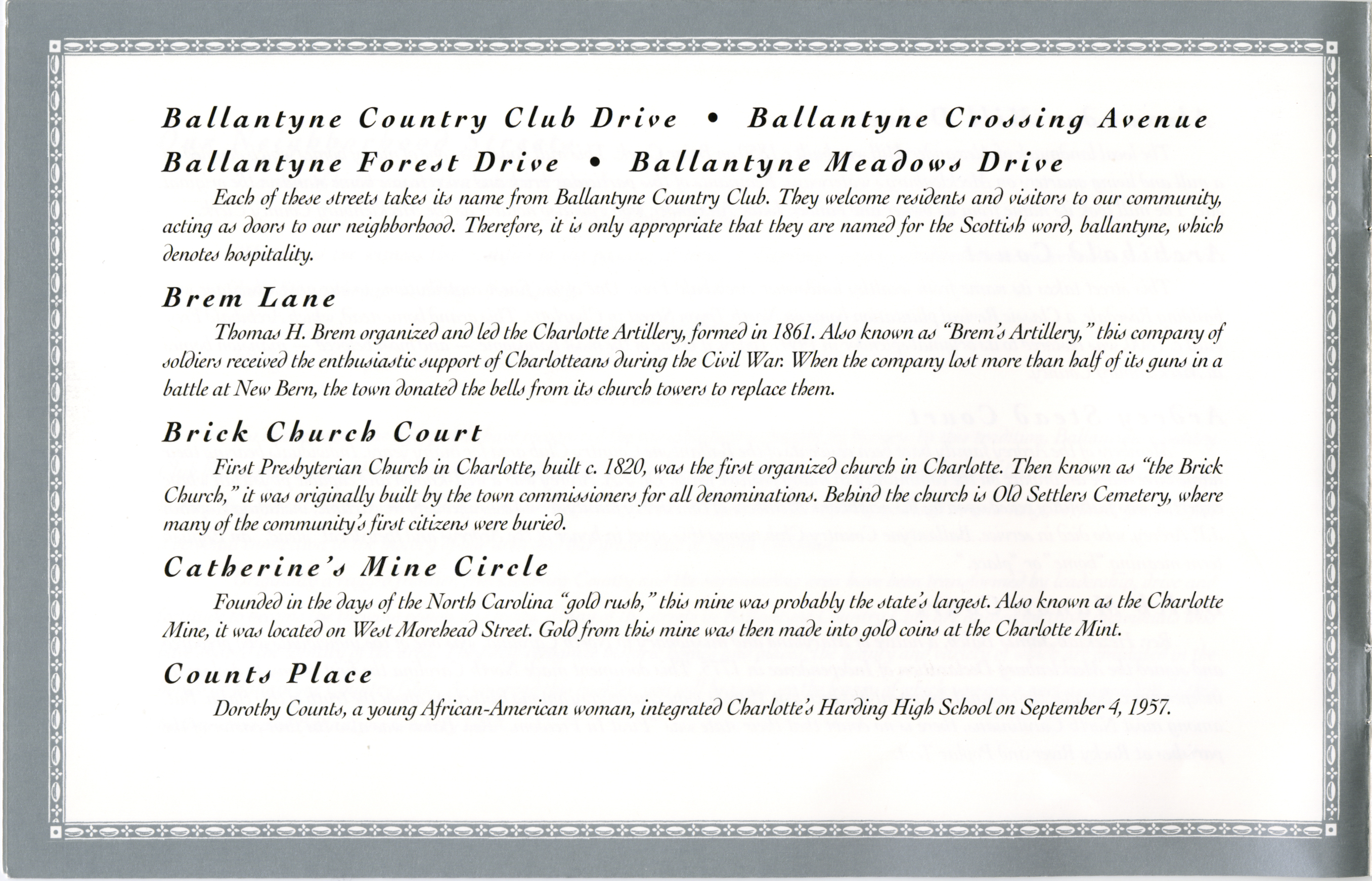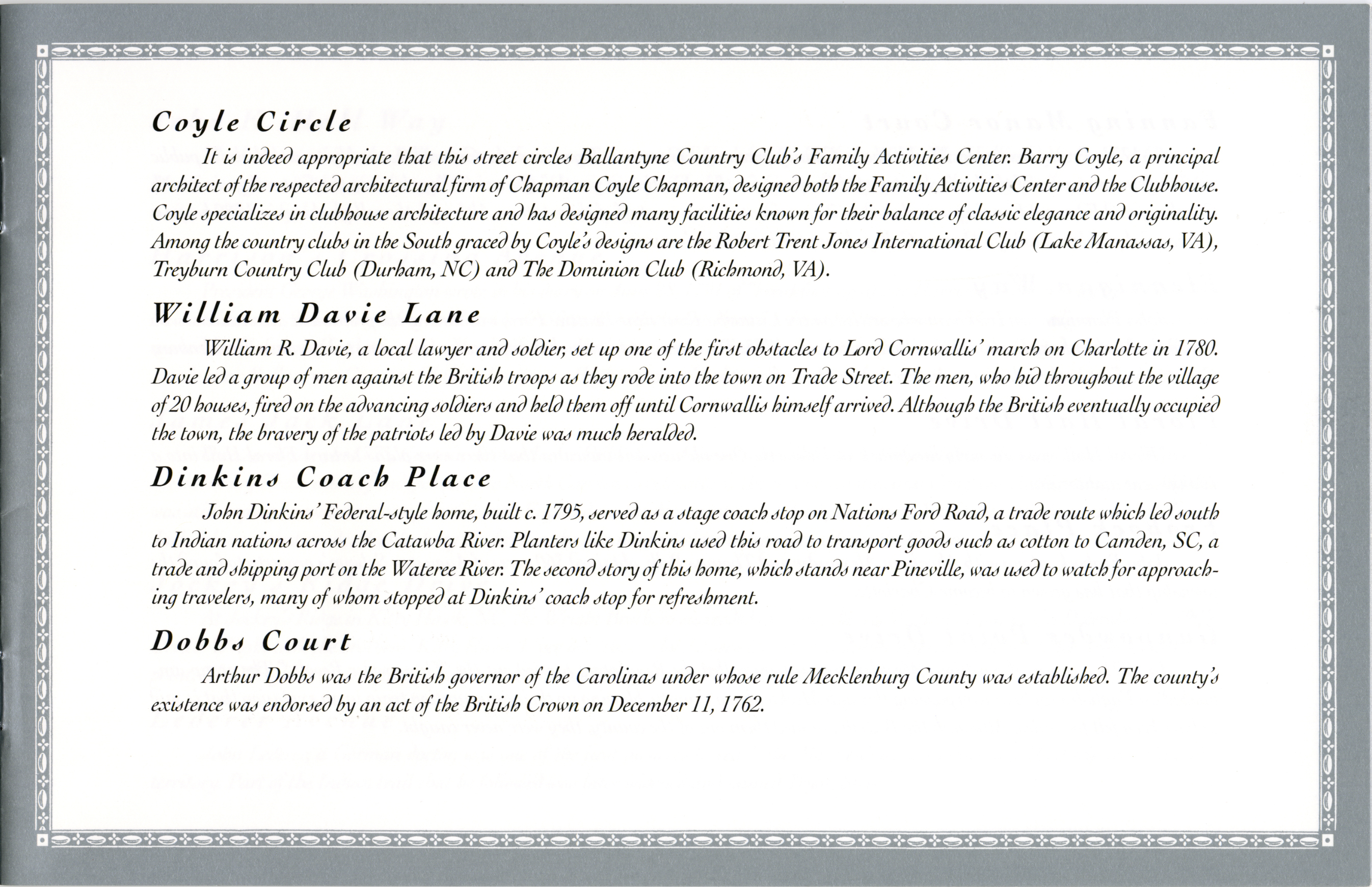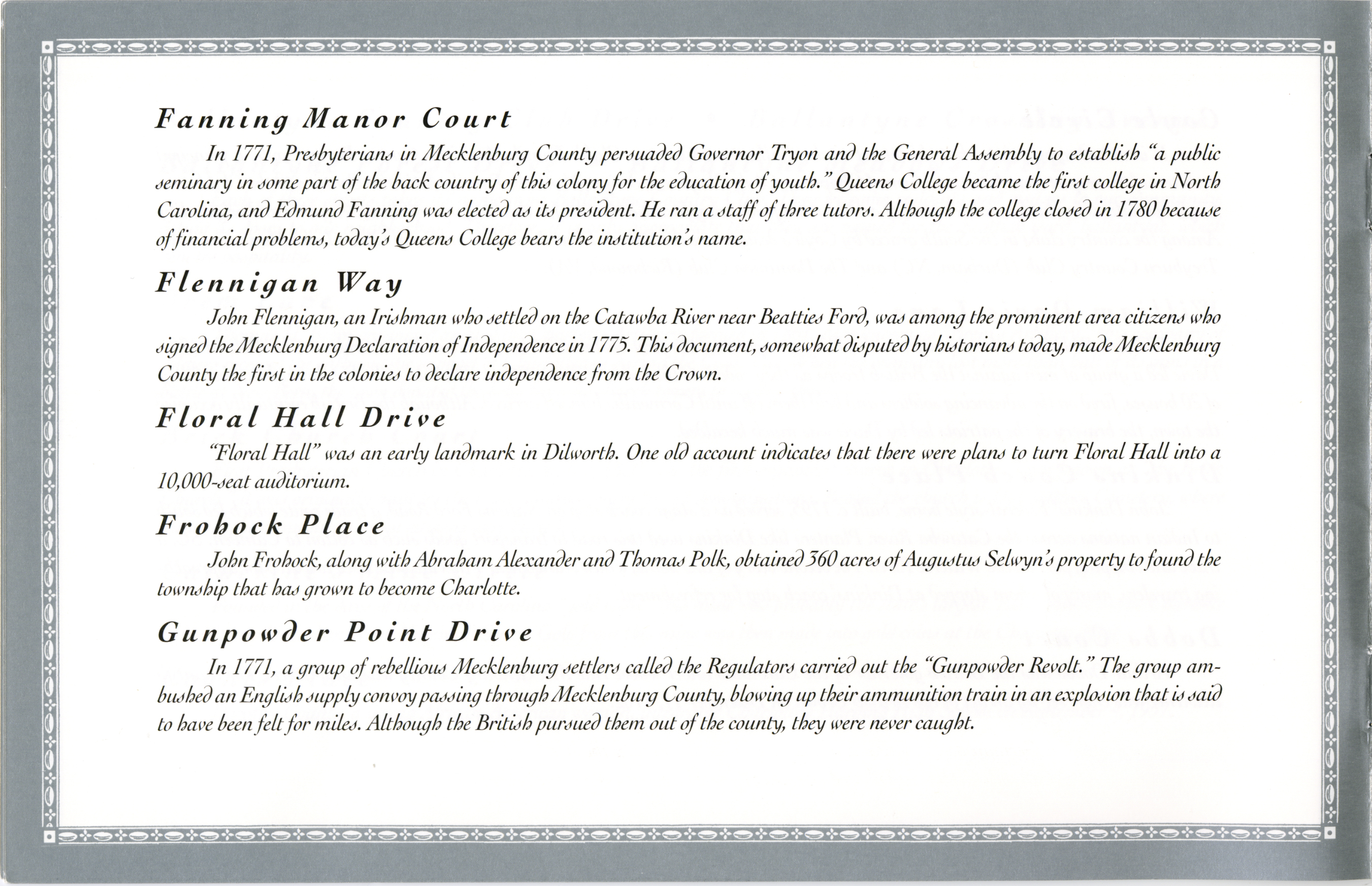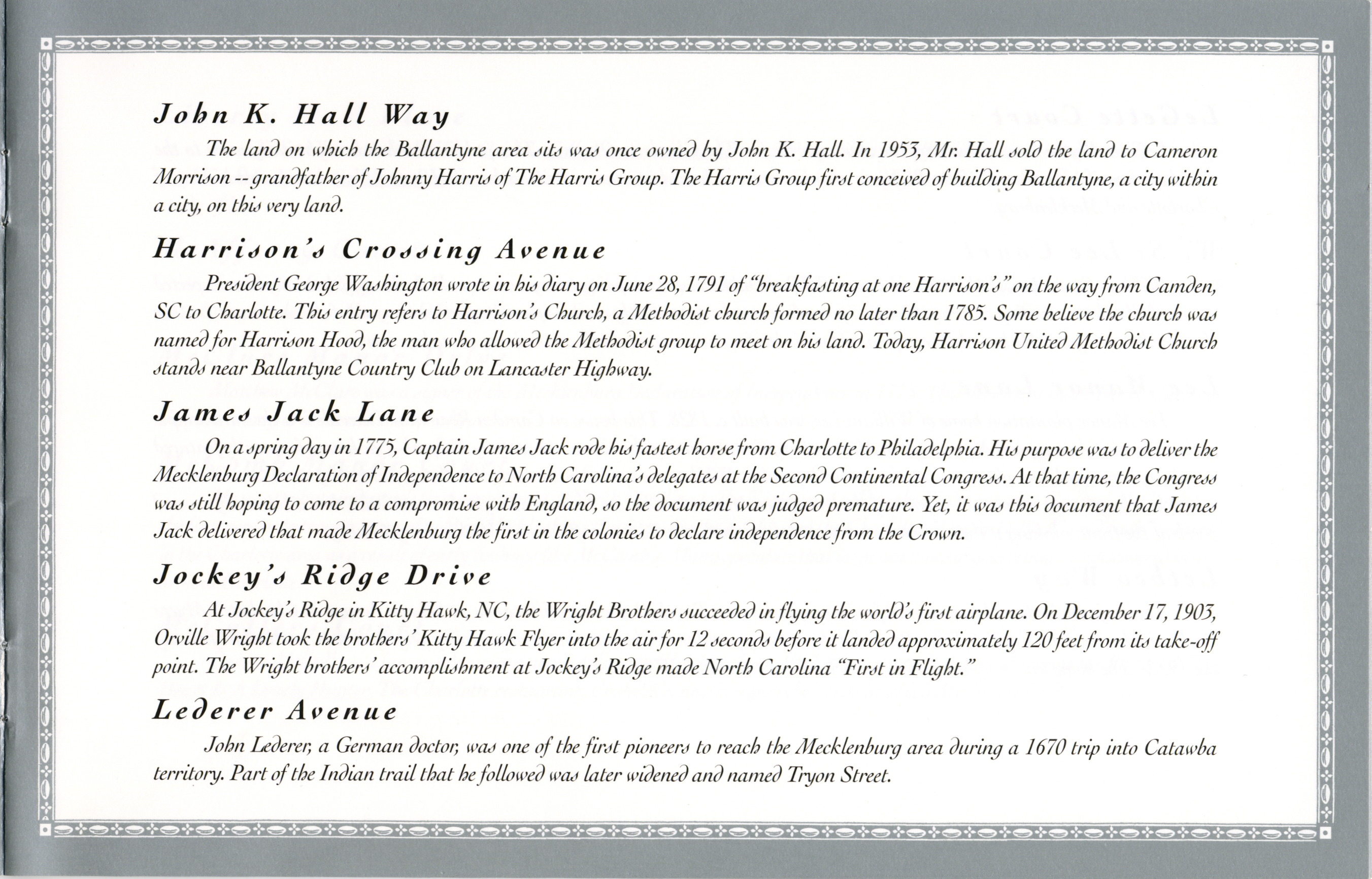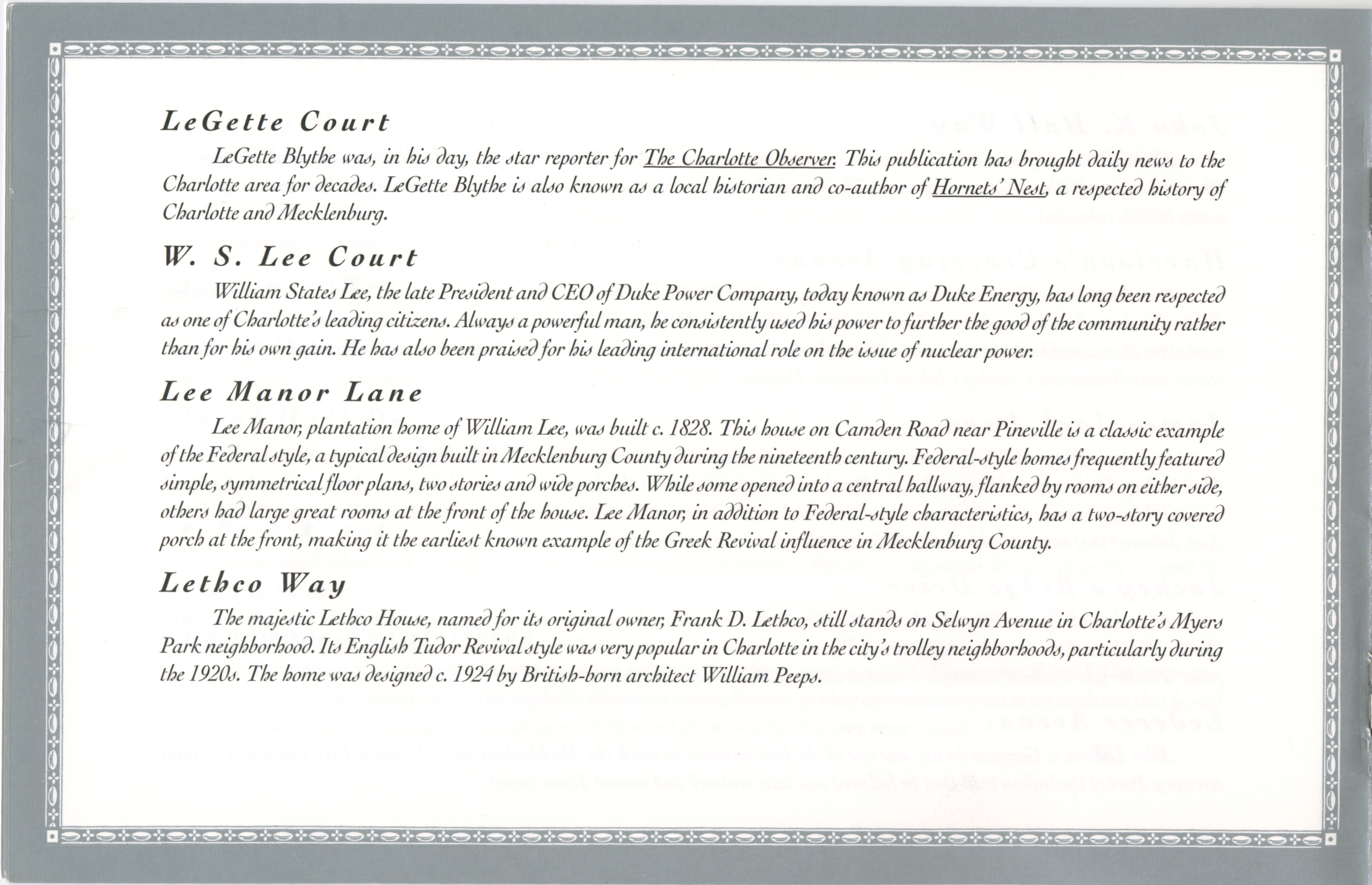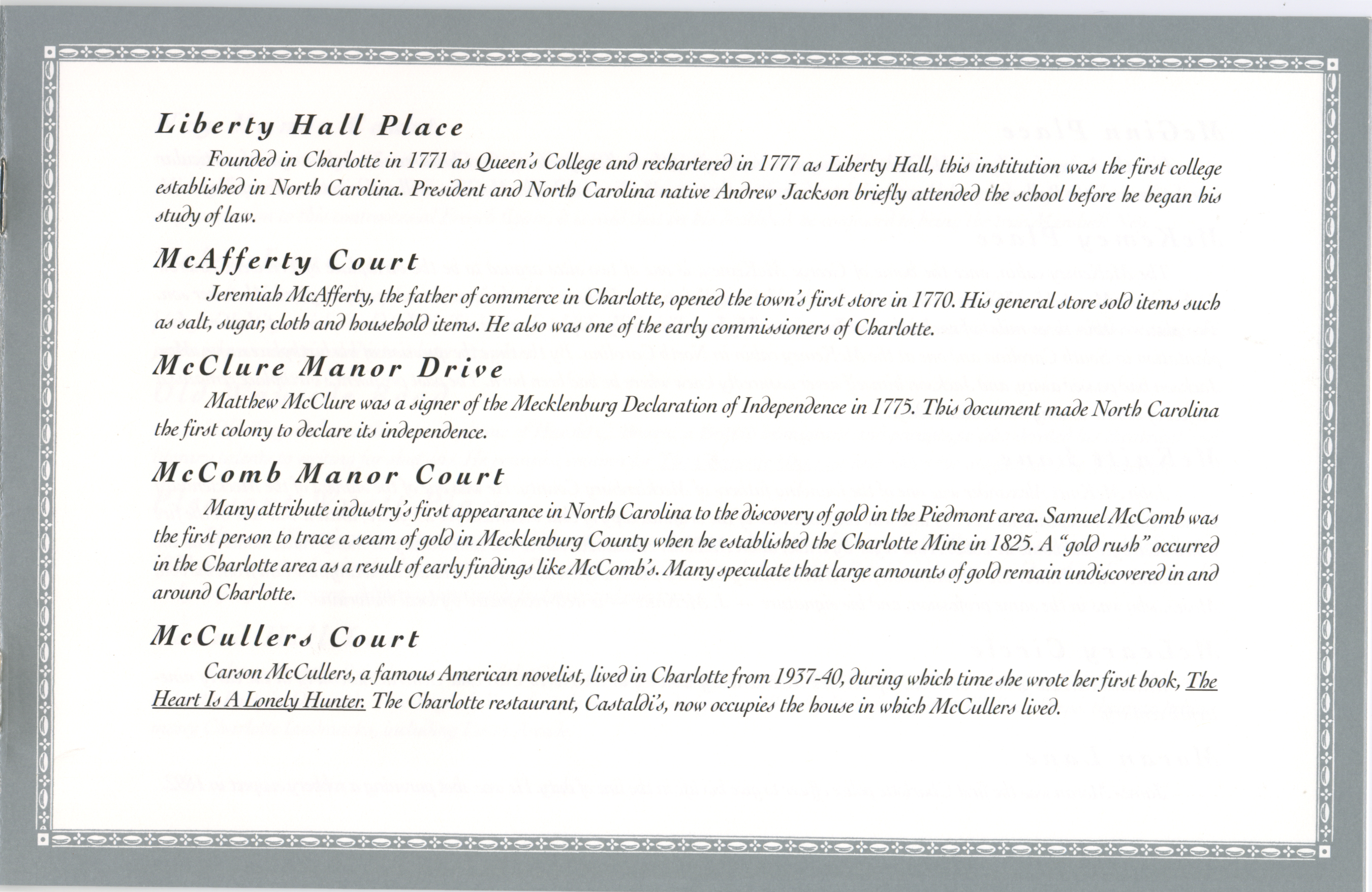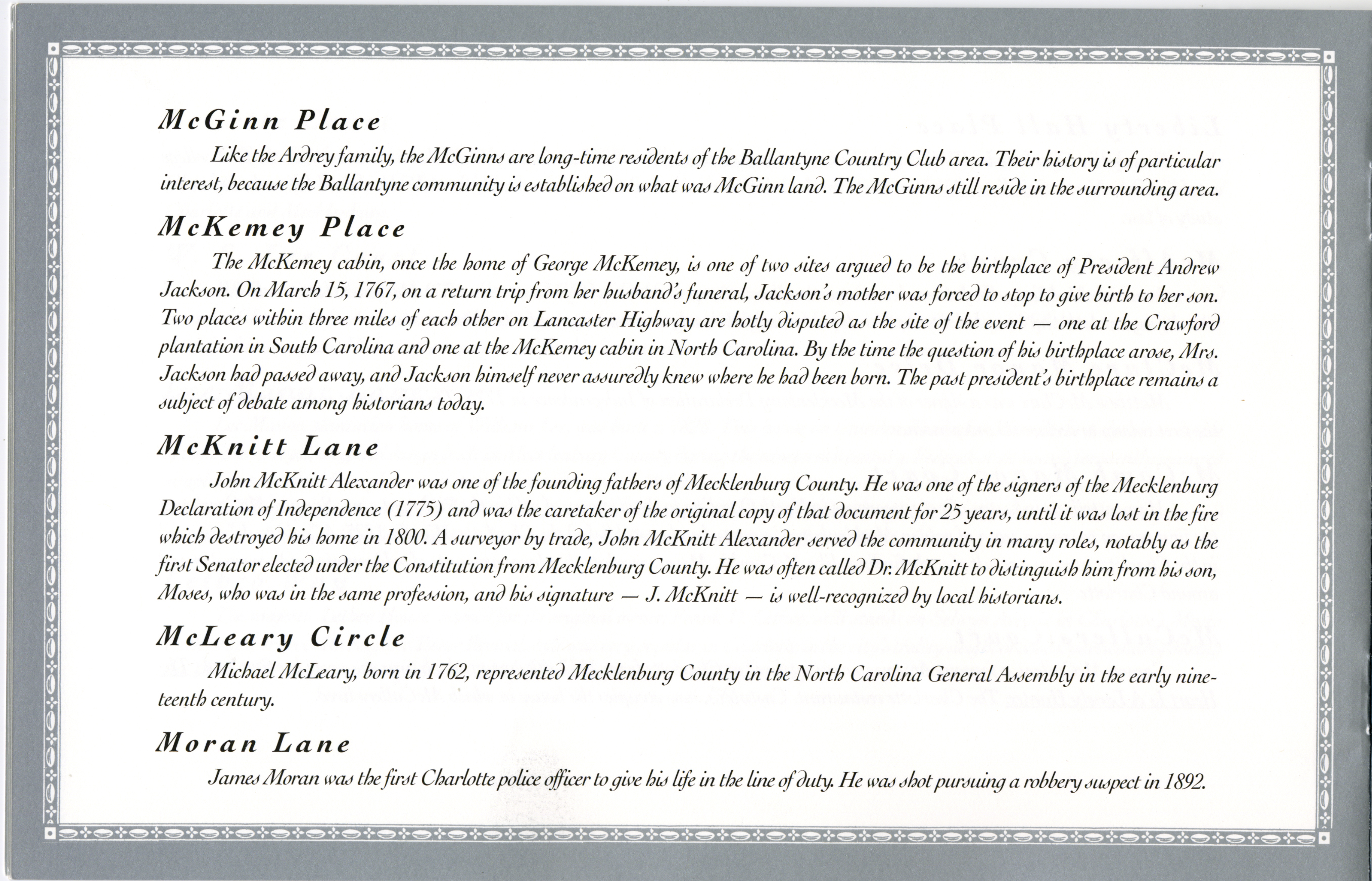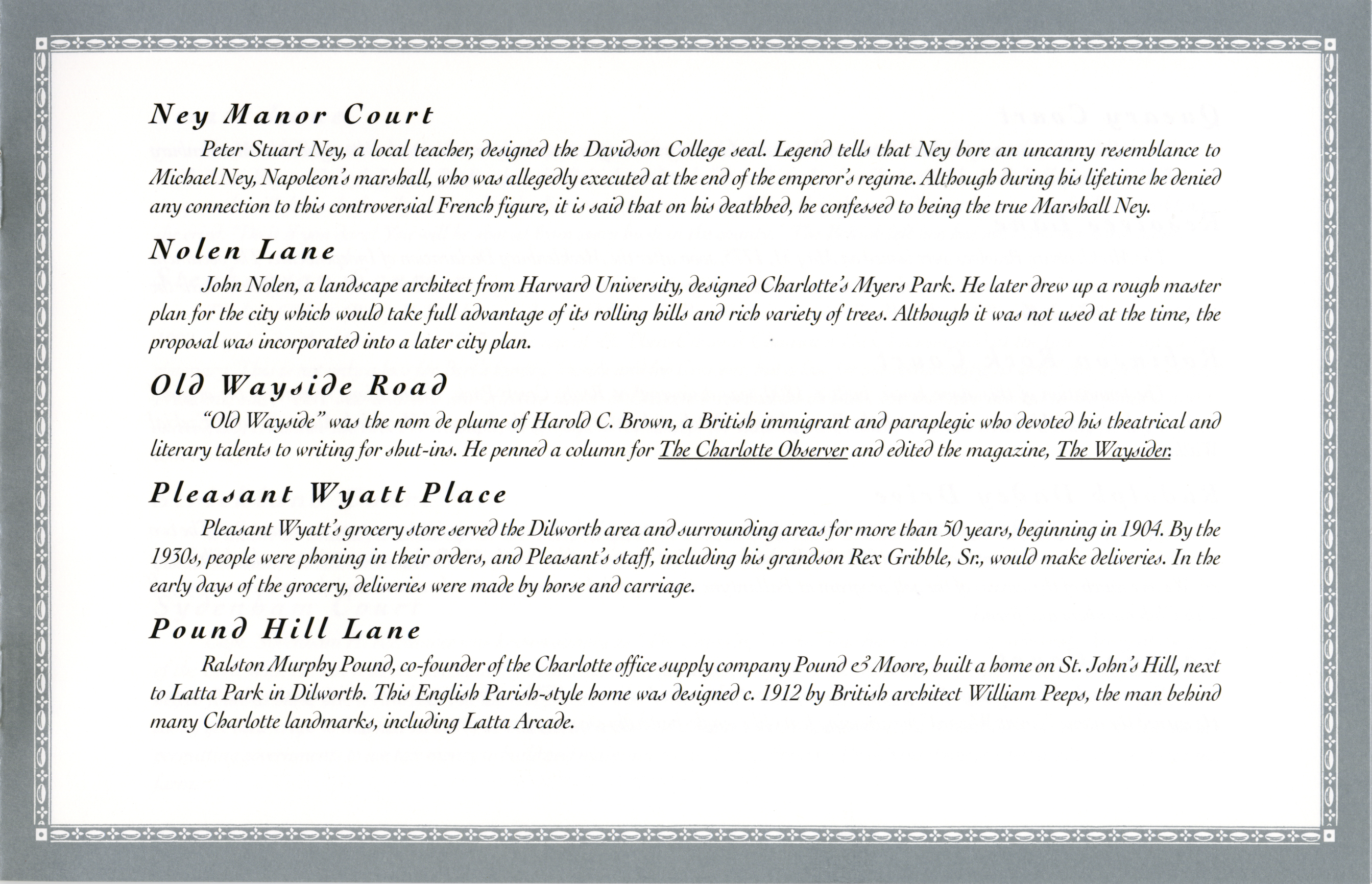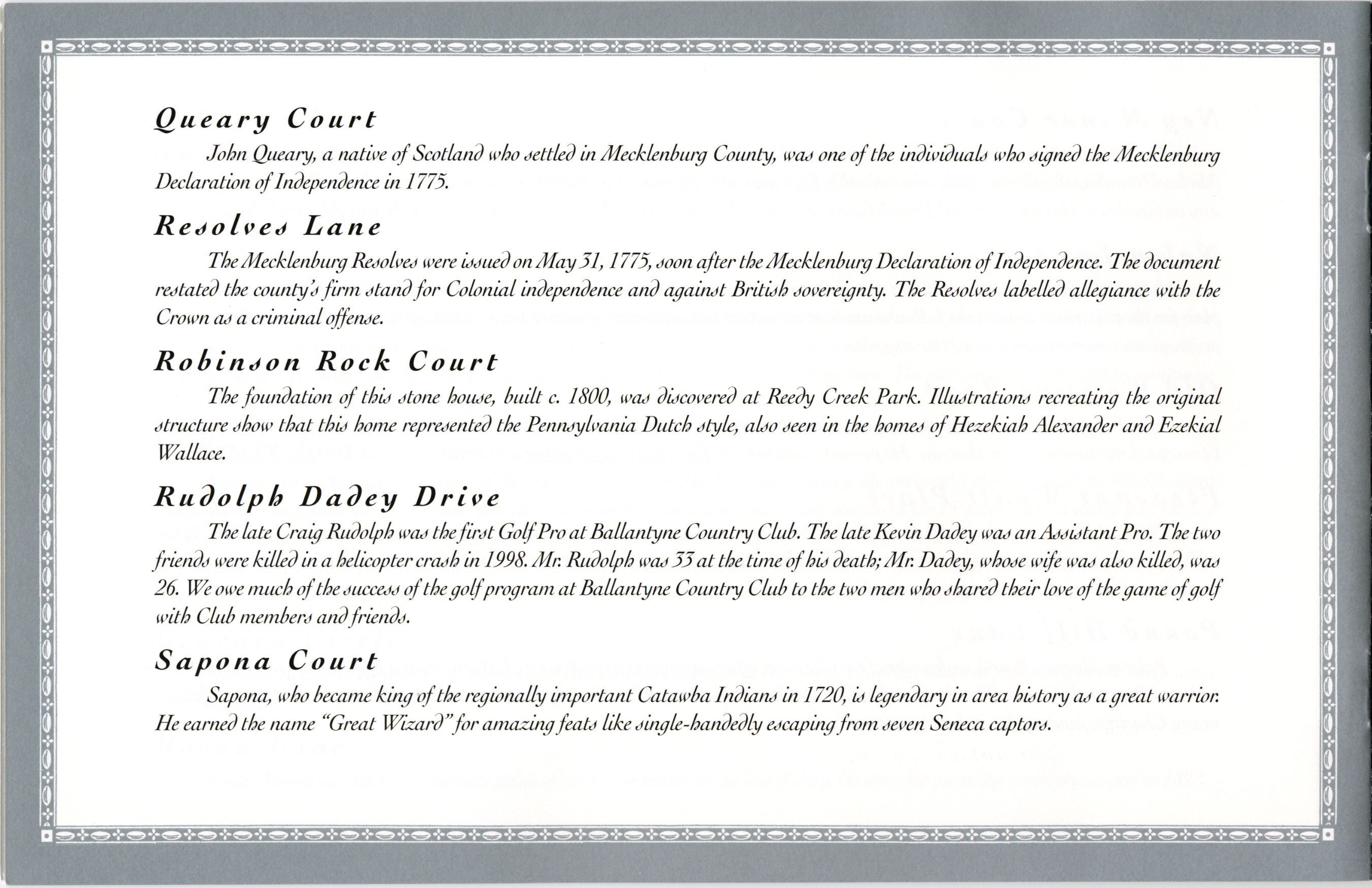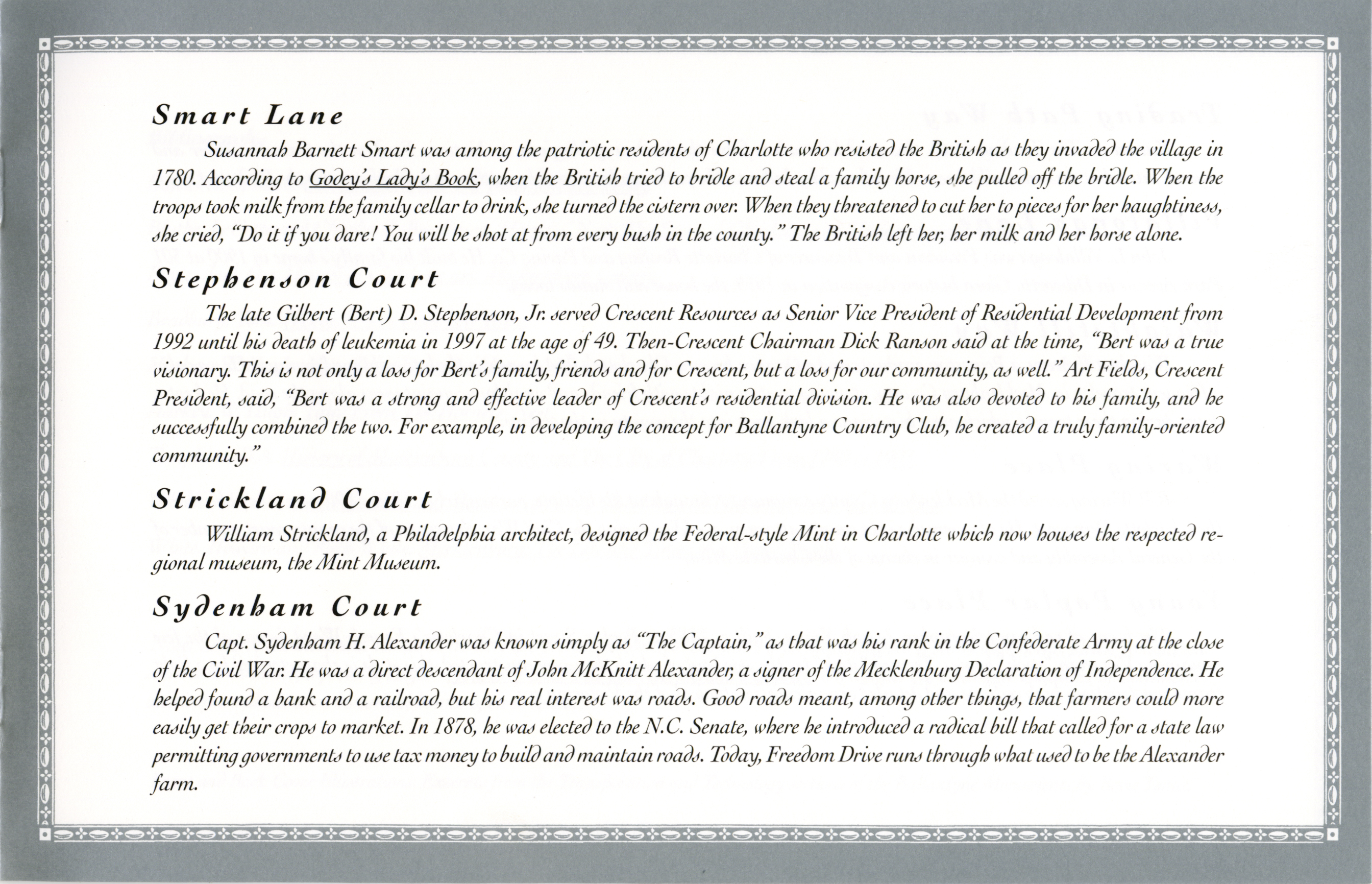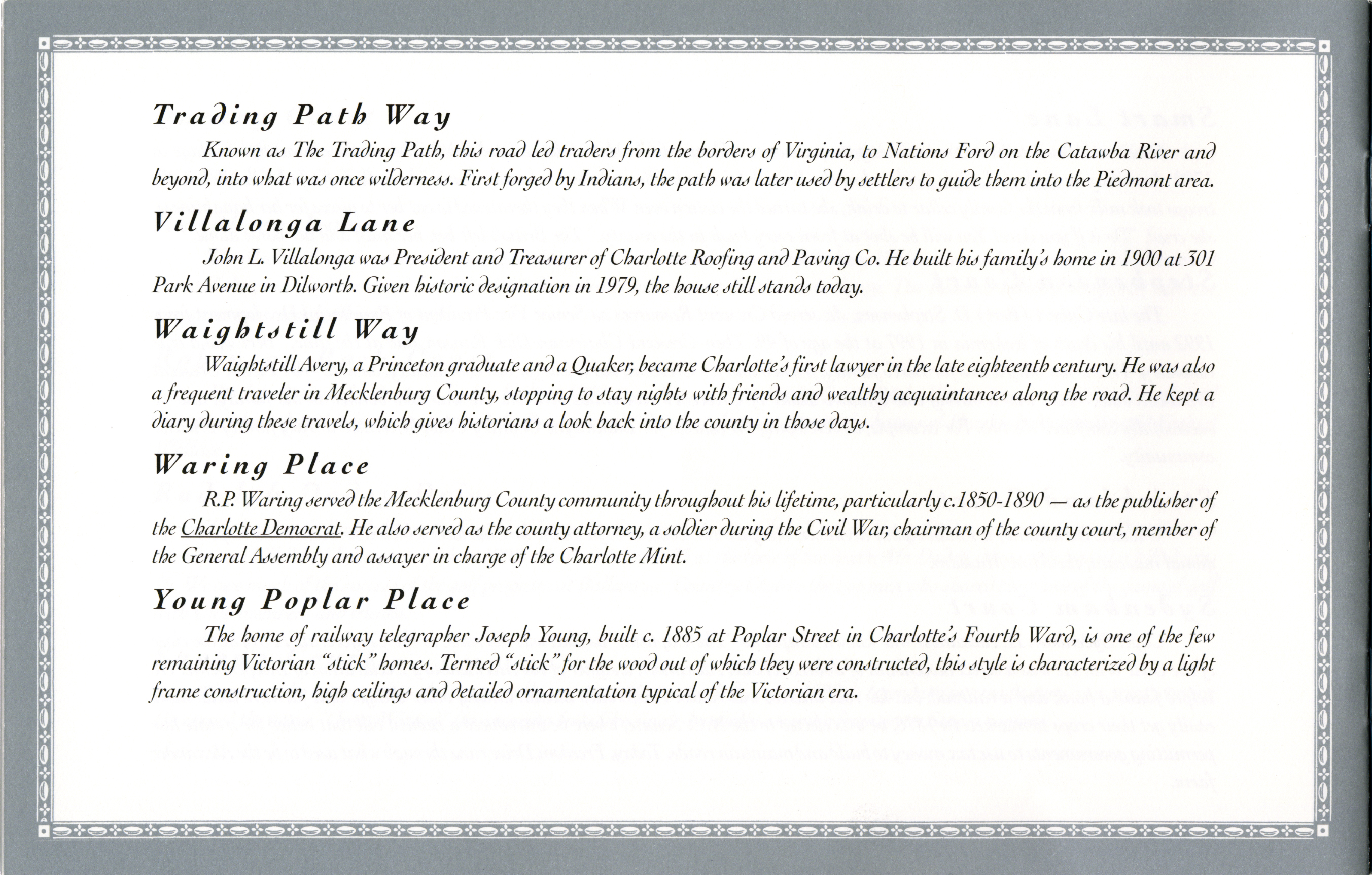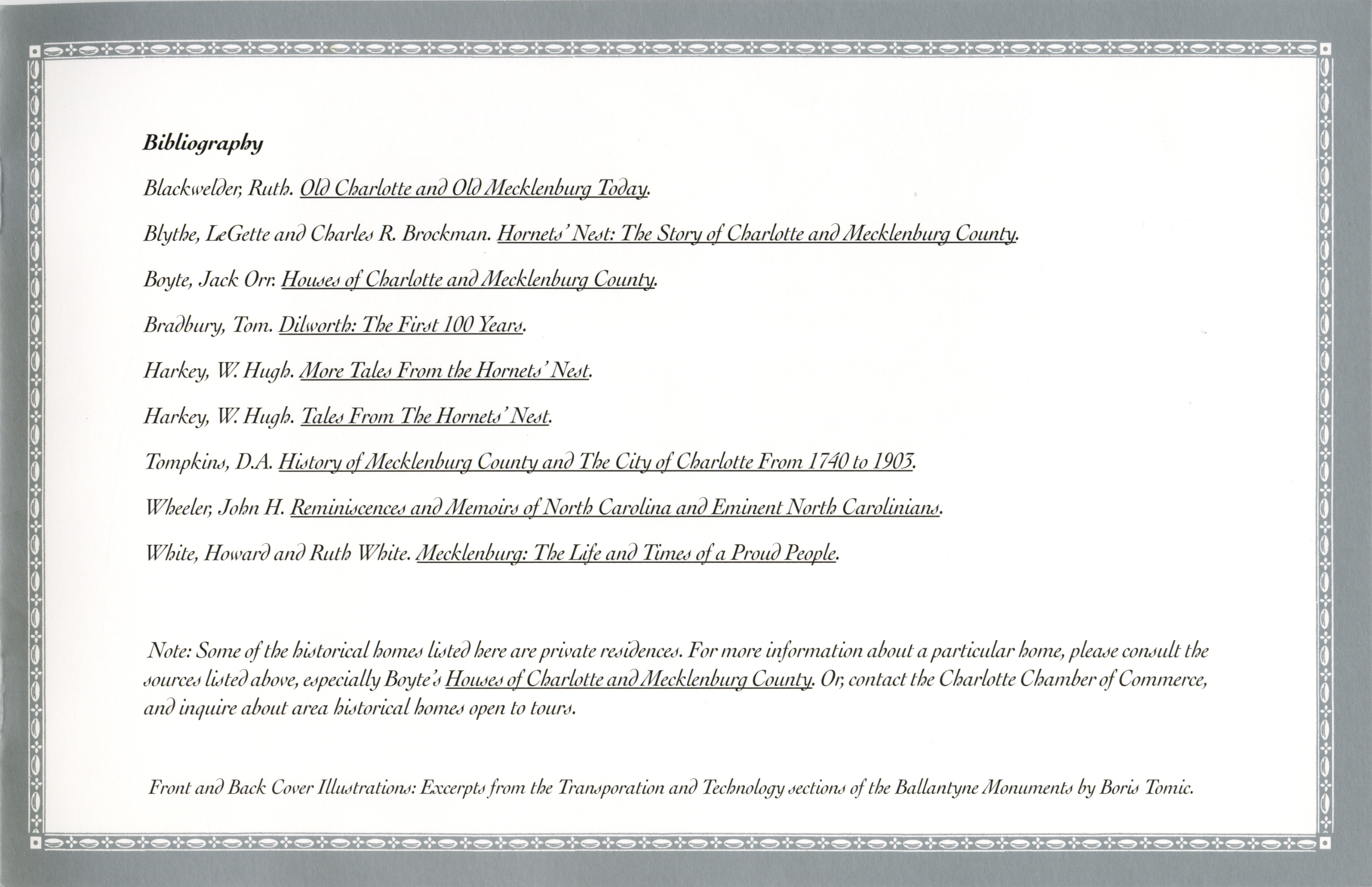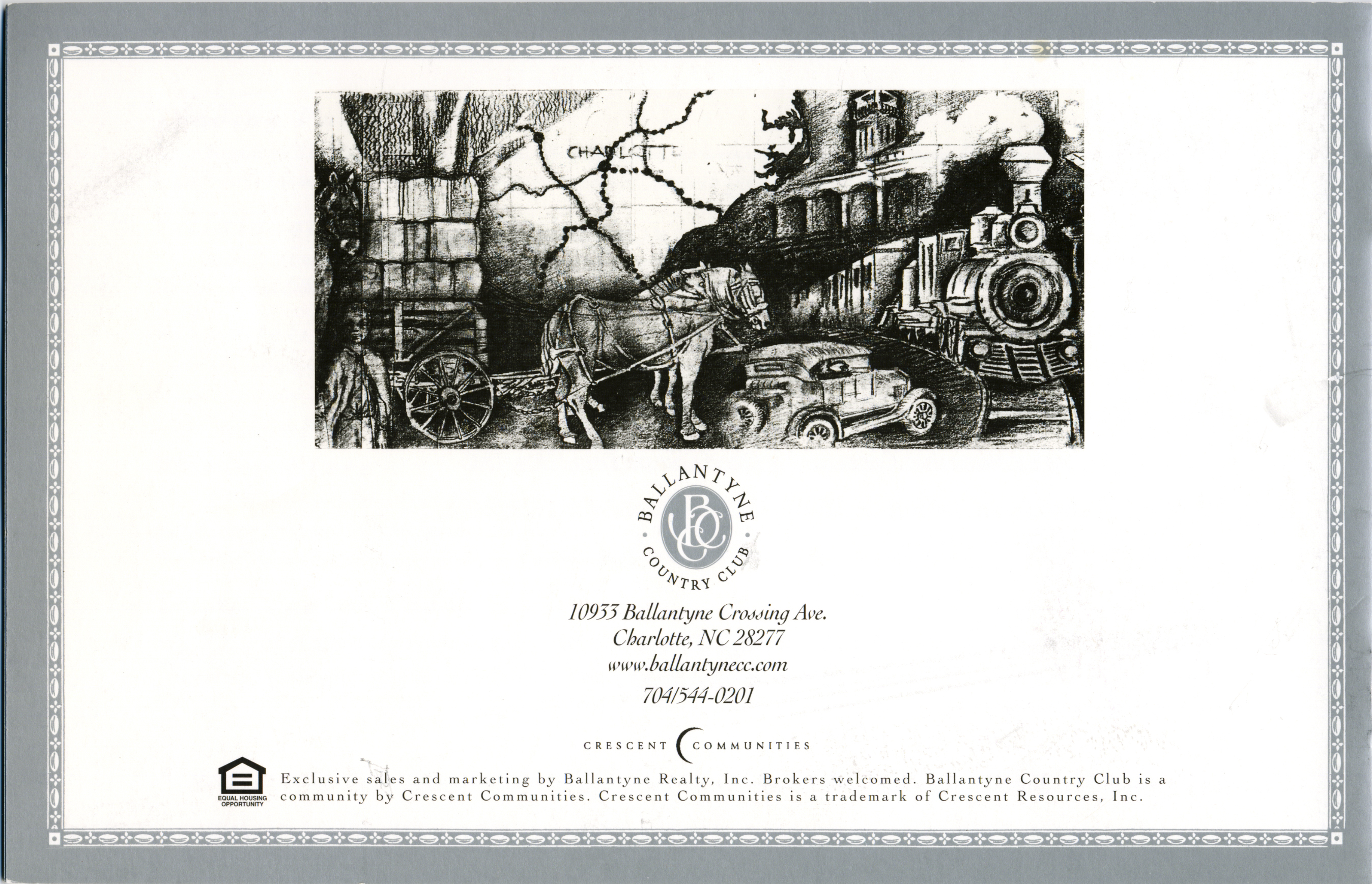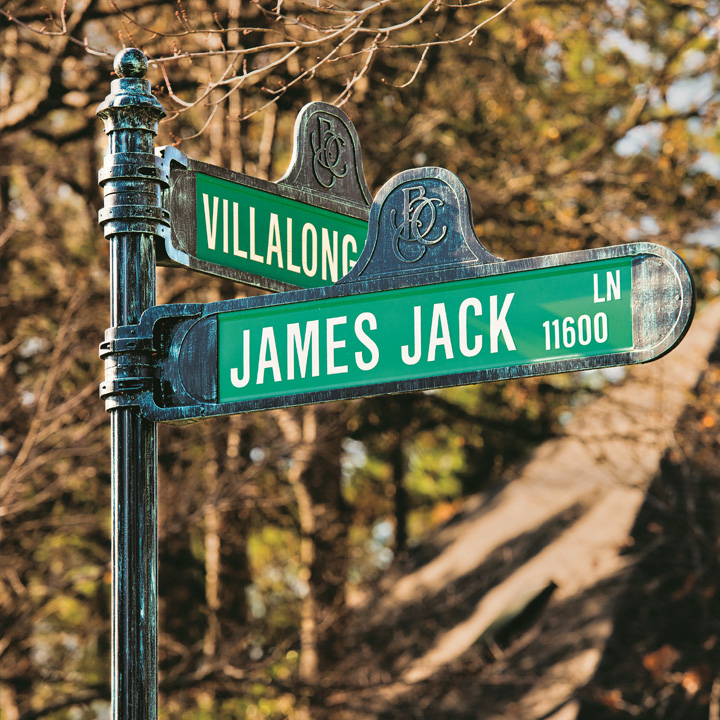
What’s In a Name?
Street names in Ballantyne Country Club mirror Charlotte history
By Nan Bauroth | Photos by Ray Sepesy
Cruising around Ballantyne may leave the impression that this community was only recently carved out of the landscape. But the area’s roots run deep, and nowhere is this fact more evident than in Ballantyne Country Club (BCC). Here, street names honor the historical legacy of Charlotte and the visionaries who helped put the Queen City, and Ballantyne, on the map.
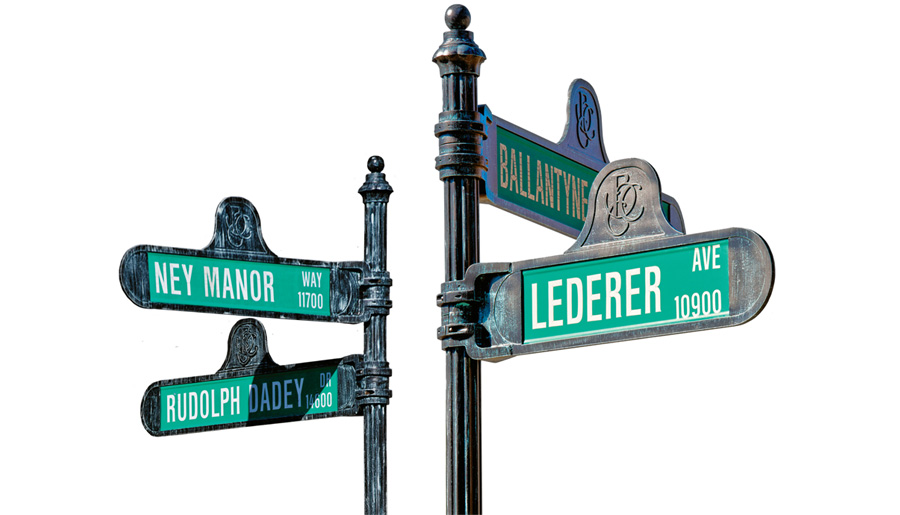
Indeed, exploring the streets in BCC is like taking a short course in Charlotte-Mecklenburg’s diverse, intriguing and turbulent history. It begins with Sapona Court, named after the local Catawba Indian king who in 1720 earned the nickname “Great Wizard” for single-handedly escaping from seven Seneca captors. There’s also Lederer Avenue, memorializing German physician John Lederer, one of the pioneers who reached the Mecklenburg area during a 1670 trip into Catawba territory.
Given Charlotte’s reputation as a “hornet’s nest of rebellion” during the American Revolution — British Gen. Charles Cornwallis offered that description — numerous BCC streets salute local patriots, including James Jack Lane, named for Capt. James Jack, who in 1775 rode his fastest horse from Charlotte to Philadelphia to deliver the Mecklenburg Declaration of Independence to the Continental Congress, according to local lore.
Smart Lane celebrates female patriot Susannah Barnett Smart, who defiantly resisted British troops when they invaded Charlotte in 1780. Warned she would be cut to pieces, she cried, “Do it if you dare! You will be shot at from every bush in the country,” prompting the enemy to leave her horse and milk alone.
Harrison’s Crossing Avenue, named for Samuel Harrison, a prominent Methodist who owned Harrison’s Plantation near Highway 521 and Providence Road West, recalls the spot in Ballantyne where President George Washington reportedly had breakfast on June 8, 1791, during his tour of the South.
BCC streets also recognize modern-day notables. Counts Place, for example, honors Dorothy Counts, the courageous, young African-American woman who integrated Harding High School on Sept. 4, 1957.

According to Mike Burnett, who for 15 years was responsible for sales and marketing of BCC as a senior vice president at Crescent Resources, the street-name concept was a collaborative effort with Kathryn Blanchard, president of Crown Communications, Crescent’s PR firm. “We thought a street-name booklet would be a great closing gift for families moving into BCC,” he explains. “It would be a marvelous show-and-tell piece, and families could spread the word about the history behind their street.”
Burnett notes that several streets also honor local visionaries. W. S. Lee Court memorializes William States Lee, president and CEO of Duke Power Company (now Duke Energy), which owned Crescent Resources. Also, Bishar Lane melds the Bissell and Harris names, two leading lights in the development of Ballantyne.
Another street with special significance is Rudolph Dadey Drive, named in memory of Craig Rudolph, BCC’s first golf pro, and Kevin Dadey, an assistant pro at BCC, who were both killed in a helicopter crash in 1998, along with Dadey’s wife.


